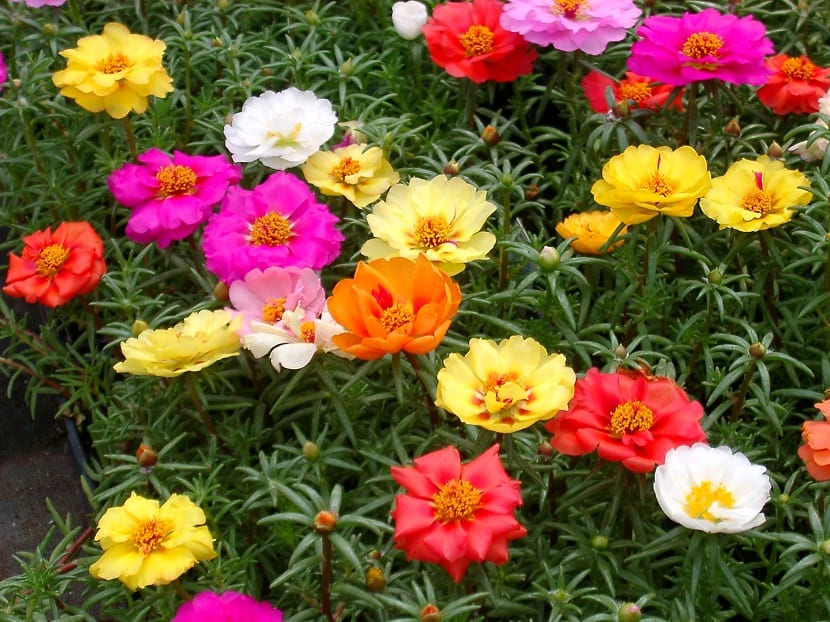
Today we are going to talk about a genus of plants that are quite colorful and used for garden and interior decoration. It's about the genre Purslane. They belong to the Portulacáceas family and are made up of more than 200 species of annual and perennial plants. The origin of these plants comes from tropical and subtropical regions of South America.
In this article we are going to describe the characteristics and general care of the plants of the genus Portulaca and we will describe some of the most important species.
Key features
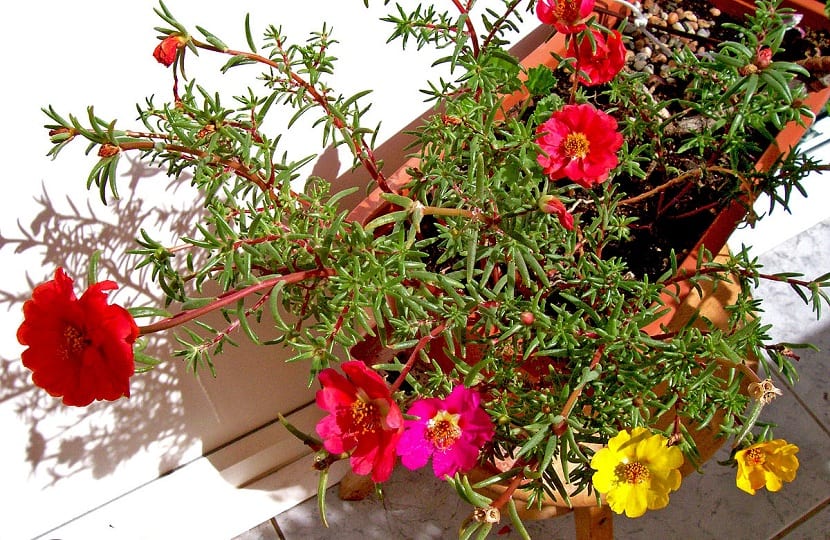
They are annual and perennial herbaceous plants whose bearing is creeping. It has fleshy leaves that are oval or linear in shape. They are usually about 2 cm long, so they are small leaves. On the other hand, its flowers are somewhat larger (up to 3 cm) and have a rosette shape. Its plume is quite rich in stamens and has 5 petals in very varied colors. The flowering season is in summer and the flowers last well into autumn.
Plants of the genus Portulaca have some curiosities. One of these curiosities is that they open only during the day and close when sunset arrives. The corollas usually last only 1 day. This is compensated by a continuous and abundant flowering. As for the fruits, they are small capsules that produce quite a few seeds.
Portulacas are normally located in places with full sun so that their development is optimal. They need average annual temperatures that endure from 15 to 25 degrees. It is a quite appropriate plant to place in the garden thanks to its ornamental power. Not only is it advisable to have them in the garden, but it is also used to make floral compositions, curbs, mixed borders, rockeries, pots and balcony planters. In maritime climates they do quite well.
Portulaca care
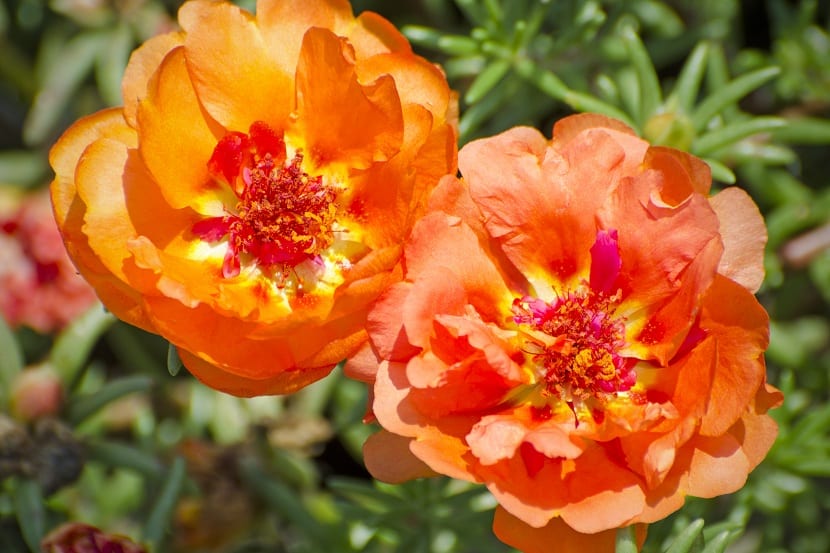
We are going to give some general recommendations for the vast majority of species of this genus. We start with the irrigation. Irrigation should increase considerably in summer. Nor should we go overboard, since we can encourage something more the development of the leaves instead of the flowers. When the first cold months arrive, it is better to stop watering them. Especially if the area where you live has a high rainfall regime.
This plant needs a soil that is quite rich in nutrients. So that irrigation does not adversely affect the survival of the plant, it is necessary that it has good drainage. This means that the water can be easily drained and no irrigation water accumulates. If this happens, standing water could kill the plant at its roots or cause it to slowly rot.
The texture that soils need to have good drainage is that it be somewhat sandy and have gravel. To plant the Portulaca and guarantee good growth success, it is best to wait for spring. In this way, we will avoid possible night frosts that could negatively affect you.
To help in its maintenance and that it is always healthy, it is advisable to spray it with a liquid fertilizer with the watering when autumn enters. In this way, it will have enough nutrients to better withstand the cold of winter. How often We will pay with the liquid fertilizer will be every 10 or 15 days from summer until the beginning of autumn. This way we guarantee that it develops and withstands high temperatures well.
The more fleshy leaves can be attacked by snails and various chewing insects. Therefore, they must be monitored so that this does not happen.
Some of the main species
We are going to briefly describe some of the main species of this genus as they are more cultivated and used in the decoration of gardens and green spaces.
Portulaca oleracea
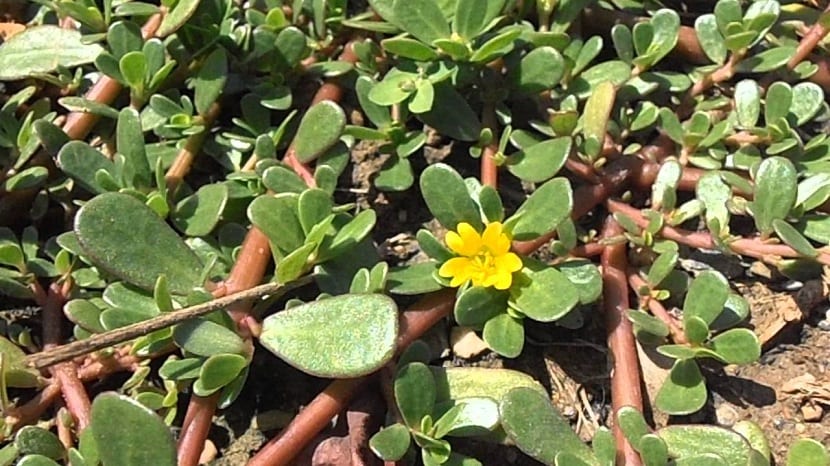
It is an annual plant native to southern Europe. If the environmental conditions and the care are good, they can reach about 25 cm in height. It is capable of self-pollination and use some insects to transfer pollen between the flowers. They have hermaphroditic units.
It needs a neutral pH and its roots will grow better if they are in a soil with a sandy texture and gravel. It can be kept with a certain degree of humidity. Irrigation must be adapted to the season. In summer it will increase somewhat more due to high temperatures and will decrease again in autumn onwards. It does not tolerate puddles, so we guarantee correct drainage. You need sun exposure. Otherwise, it may affect their growth. It is true that in summer it can be interesting to put it in semi-shade from time to time so that it does not cause damage to the fabrics.
portulaca grandiflora
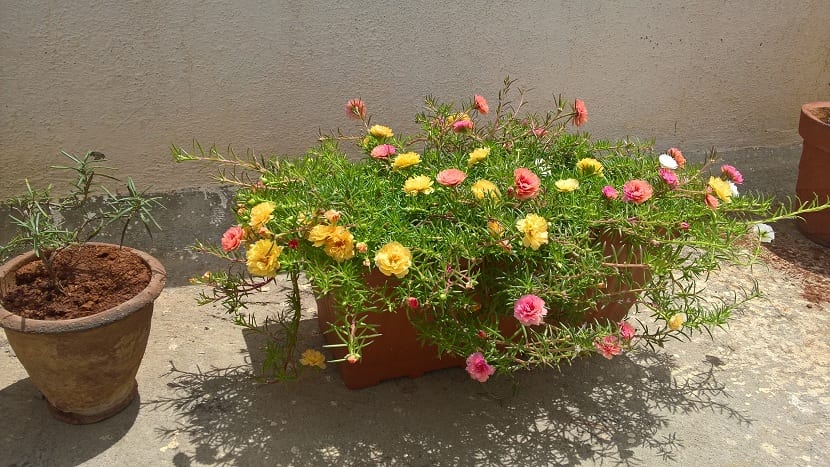
La portulaca grandiflora It is a plant that usually measures between 15 and 20 cm. Its bearing is creeping and is perennial or expires depending on the climate where it is found. Its flowers open when sunlight is most intense. Flowering takes place in spring.
With regard to its care, it needs full sun, since its flowers do not open in the shade. You have to water it more in the warm season but without puddling the soil. They multiply easily by seed during the spring.
portulaca umbraticola
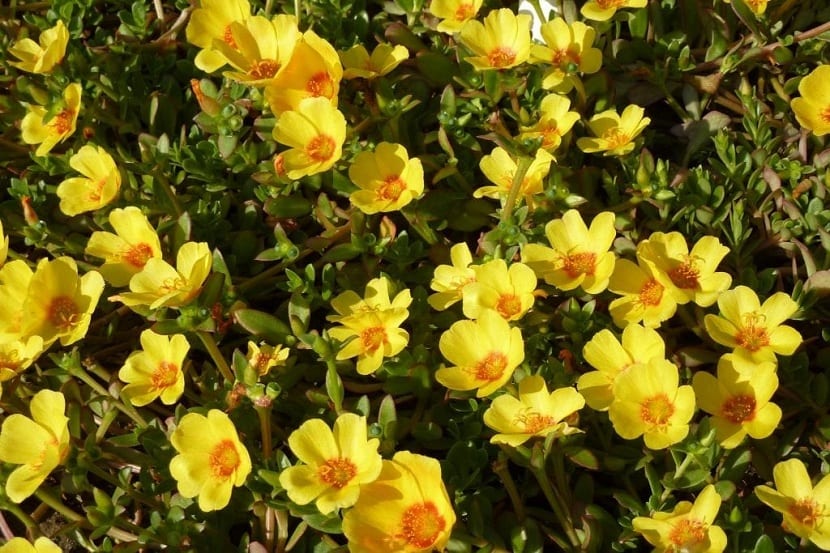
La portulaca umbraticola It has an annual cycle and reaches a height of between 11 to 28 cm. It requires a location in full sun so that it can develop in good conditions. If you plant it in a pot, you will have to mix it with pelita in equal parts. It needs to be watered 2 or 3 times in summer and the soil has good drainage. It multiplies easily in spring by placing the seedbed in full sun.
It is a plant that resists high temperatures fairly well, but it does not bear frost at all. This means that in summer we have to take more care of them and add liquid fertilizer so that they have enough nutrients and in winter we will reduce the frequency of watering. Especially if our climate has a high rainfall regime.
I hope that with this information you can learn more about the Portulaca and the main species of the genus.